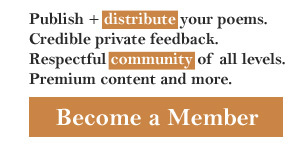This is an analysis of the poem Leave-Taking that begins with:
Let us go hence, my songs; she will not hear.
Let us go hence together without fear;... full text
Elements of the verse: questions and answers
The information we provided is prepared by means of a special computer program. Use the criteria sheet to understand greatest poems or improve your poetry analysis essay.
- Rhyme scheme: aababaa ccacacc ddcXcdd eXdXdee aaeaeaa ffbfaff
- Stanza lengths (in strings): 7,7,7,7,7,7,
- Closest metre: trochaic pentameter
- Сlosest rhyme: enclosed rhyme
- Сlosest stanza type: tercets
- Guessed form: unknown form
- Metre: 1111111011 1111010011 11011101010 1101111111 11111111110 1111110001 1111 1111111011 1111010111 1011111101 1011111111 1101010101 1111111101 1111 1111111011 1111011101 10011111111 101111011011 1011110101 1111111111 1111 1111111011 1111101110 1111111111 1110110001 1001011011 111111001001 1111 1111111011 1101110101 1011010101 111010101101 1111110111 11010011101 1111 1111111011 1111010101 11010011110 010100111011 1111111111101 111111011011 1111
- Amount of stanzas: 6
- Average number of symbols per stanza: 294
- Average number of words per stanza: 60
- Amount of lines: 42
- Average number of symbols per line: 41 (medium-length strings)
- Average number of words per line: 9
Mood of the speaker:
The punctuation marks are various. Neither mark predominates.
The author used lexical repetitions to emphasize a significant image; she, not, and, all, we are repeated.
The poet used anaphora at the beginnings of some neighboring lines. The same words let, and are repeated.
The author used the same word let at the beginnings of some neighboring stanzas. The figure of speech is a kind of anaphora.
The literary device anadiplosis is detected in two or more neighboring lines. The words/phrases she, we connect the lines.
If you write a school or university poetry essay, you should Include in your explanation of the poem:
- summary of Leave-Taking;
- central theme;
- idea of the verse;
- history of its creation;
- critical appreciation.
Good luck in your poetry interpretation practice!
Pay attention: the program cannot take into account all the numerous nuances of poetic technique while analyzing. We make no warranties of any kind, express or implied, about the completeness, accuracy, reliability and suitability with respect to the information.

